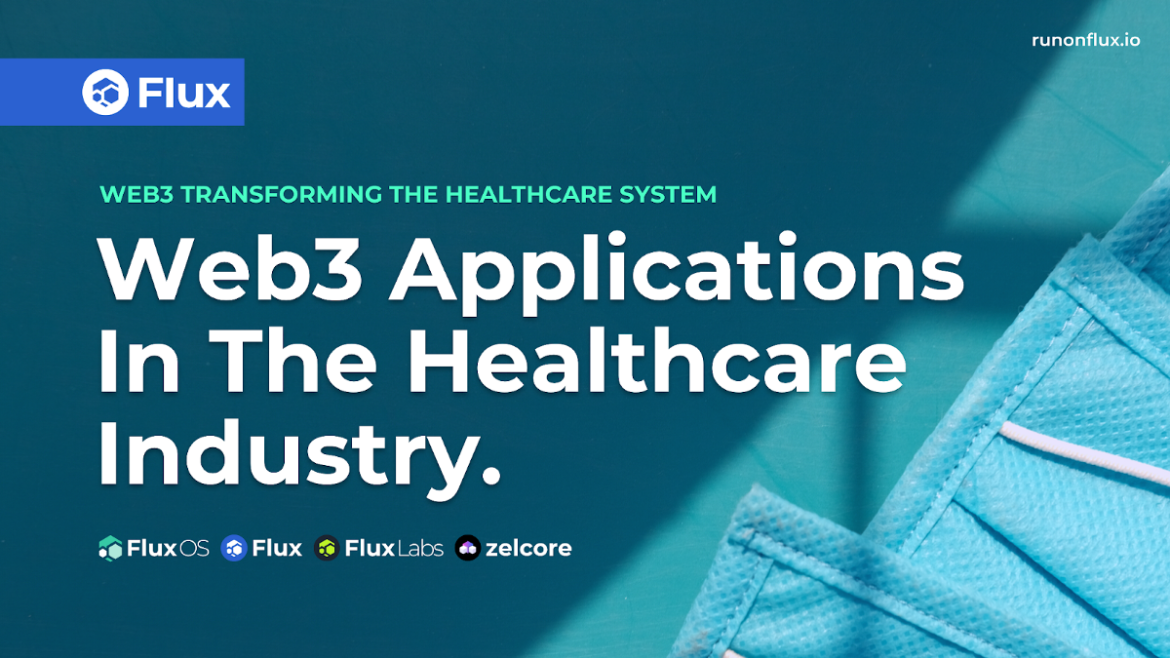Web3 has experienced rapid growth over the last couple of years, particularly in the Technology and money market. Beyond the financial sector, Web3 is also gradually transforming the healthcare system. Learn more about why Flux and decentralized computing will lead the way.
In today’s healthcare industry, data is almost everything. Patients’ records, medical history, symptoms, test results, etc., are essential in helping health institutions monitor, analyze and provide the best possible medical aid. While the static read-only health websites of Web1 provided helpful health information and resources, they lacked the interactive component to give the needed professional-patient relationship outside the consultation hours.
Web2 fixed this and added a new layer of synchronization. Patients’ data and medical history collected by different medical devices and sensors could be easily exchanged between doctors and health institutions, leading to faster and more effective medical intervention. Telemedicine made the provision of remote healthcare possible through video chat-based applications.
While the collective efforts of a centralized Web2 have yielded immense benefits for patients and health workers, the question of data ownership remains. Due to the nature of the healthcare industry, some regulations restrict 3rd parties applications and service providers in the healthcare sector from blatantly mining patients’ information for financial gain. However, this does not change the fact that this data is owned not by the people but by the providers.
If anything, multiple incidents over time have shown companies often break the trust reposed in them over patients’ data, coupled with the rising level of data breaches in the healthcare sector. In 2021, healthcare data breaches hit an all-time high, affecting over 45 million individuals.
Web3 offers a different approach. A decentralized and trustless ecosystem where patients not only own their data but also reserve the rights to share and monetize it. The transparency and immutability of blockchain-based Web3 will also help preserve the data’s integrity, making it impossible to counterfeit. This quality is of immense importance in a sensitive industry like healthcare. But there are also more potential ways Web3 will shape the future of healthcare. Let’s dive into them.
Accurate, high-quality data is invaluable in the healthcare sector, allowing institutions to develop better and more efficient healthcare products, systems, and treatments. Accessing this data, however, can be cumbersome because it is often scattered and fragmented across different hospitals and systems. Web3 makes it possible to design and put decentralized platforms that can help gather, clean, and structure this data into a single system, making it easy for health professionals to access.
The semantic nature of Web3 will also allow for a more contextual utilization of patient data. Health records, symptoms, and treatment possibilities can be monitored and compared. From day-to-day cardiac information via a fitness watch to genomics, it would be possible to create the proper contexts around patient data. For example, AI systems would be able to analyze large amounts of data to determine similarities between patients’ symptoms and treatments. By identifying patients with similar health records, health professionals can fine-tune diagnoses and suggest treatments with much more precision. As the world entirely moves into the age of IoT, more data can be collected via different sources to create a personalized health profile for individuals allowing for faster and more effective health deliveries.
Interoperable blockchains will allow for data sharing across different platforms. Imagine a nutrition DApp that can interact with your workout application to determine the best kinds of food to help you lose or gain weight accordingly. Devices we use will be able to collect data about our lifestyle and diet routines, which can be shared with hospitals, health institutions, or programs to contribute to medical research. Web3 encourages community participation in learning about how different medical conditions occur.
Web2 search engines gave us the ability to access information from multiple sources. However, the availability of an endless stream of unorganized information on the web keeps professionals searching more instead of finding. Information overload means more time must be spent online to find the best resources and evidence, which typically lengthens the diagnosis-treatment process. Information retrieval in Web3 would salvage the internet from the battle of clicks and make relevant resources easily accessible. Improved access to relevant health information via semantic and other resources will help to dispel health misinformation and translate to a better understanding of the underlying causes behind many health issues.
Centralized control invariably leads to power-drunk decision-making, and often, users end up on the short end of the straw. Web3 offers an incentivized community-driven approach to healthcare. One in which consumers retain control over their medical data and can get rewarded with tokens for sharing this data with applications or companies that need them.
The tokenized economy unites the people towards achieving a common goal of growth and better healthcare for all. Service providers get quality data to foster more health innovation, while users get reimbursed for their efforts in providing their data. The highly scalable infrastructure and potential of Web3 will also enable this system to cater to the health needs of millions, if not billions, of healthcare consumers worldwide.
Sure, there remains a lot to be done in terms of design, implementation, and the integration of Web3 across healthcare; there are still questions regarding the self-management of data. For example, what happens if individual users lose their wallets? Web3 is still growing, so Flux continues to build fast, interoperable and scalable infrastructure to maintain the ideal ecosystem for Web3 solutions to thrive across various systems.
Join us: www.runonflux.io

